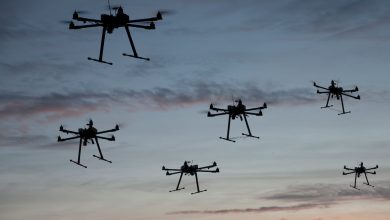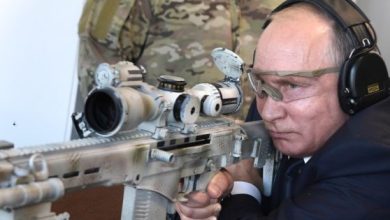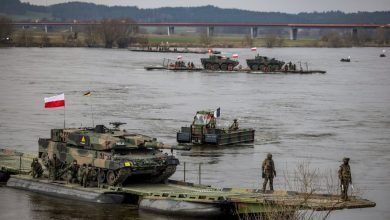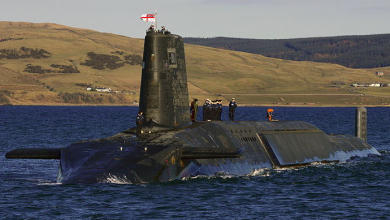For Replicator 2, Army wants AI-enabled counter-drone tech

The Army is eyeing a mix of existing and new technology to potentially scale through the second iteration of the Pentagon’s Replicator initiative, including systems that use artificial intelligence and machine learning to target and intercept small-drone threats.
Defense Secretary Lloyd Austin announced last month that Replicator 2 would center on countering threats from small drones, particularly those that target “critical installations and force concentration,” he said in a Sept. 29 memo. DOD plans to propose funding as part of its fiscal 2026 budget request with a goal of fielding “meaningfully improved” counter-drone defense systems within two years.
As with the first round of the program — which aims to deliver thousands of low-cost drones by next summer — Replicator 2 will work with the military services to identify existing and new capabilities that could be scaled to address gaps in their counter-drone portfolio.
Doug Bush, the Army’s acquisition chief, said Monday that Replicator 2 is particularly focused on fixed-site counter-small uncrewed aerial systems, or C-sUAS, needs, which means protecting installations and facilities. The Army has been fielding systems to detect and engage drones at overseas bases, largely in the Middle East, for several years, and Bush said the service will initially look to increase production of those capabilities.
The Army could start to ramp up production of these existing lines right away, Bush told reporters at the Association of the U.S. Army’s annual conference, and may seek to reprogram funding in fiscal 2025.
“If Congress wants to help us in ‘25 when we reprogram, we have things we can buy today that we know work pretty well,” he said. “That’ll be one line of effort, expanding what we already have at the sites we’re assigned by the Department of Defense.”
But the Army also wants to use Replicator to explore emerging counter-drone technology, Bush said. The service is especially interested in systems that can not only detect objects but also use AI and machine learning to help decide how to engage them.
“It’s kind of a three-part problem set,” he said. “You have to detect it, figure out what to do, and then have an effector that can do something about it if you’re allowed. That middle part of figuring out what to do and bringing the data into that, I think, is where we can do better than we have.”
Championed by Deputy Defense Secretary Kathleen Hicks, Replicator’s goal is to create a new pathway for the Pentagon to buy and scale high-need capabilities on faster timelines. Replicator 1 centers on delivering thousands of low-cost drones by next summer. The department plans to spend a total of $1 billion on the effort in fiscal 2024 and 2025.
Projects that the Army and the other services propose for the effort move through a validation process largely overseen by the Defense Innovation Unit. DIU Director Doug Beck chairs the Defense Innovation Working Group, which evaluates capabilities and recommends them for senior leader approval.
Maj. Gen. David Stewart, director of the Joint C-sUAS Unmanned Aircraft Systems Office, said Monday that the Army is in the validation process for Replicator 2.
“The first thing to do is validate what you want to defend or protect,” he told reporters on the sidelines of AUSA. “And then it’s the process of determining what do we have that’s commercial off the shelf or military off the shelf or is it something new that we have to look at.”
The Replicator team takes advantage of planned demonstrations to do that validation work, and Stewart highlighted NORAD and U.S. Northern Command’s upcoming C-sUAS event, Falcon Peak, as one near-term opportunity.
C-sUAS on display
AUSA’s expansive exhibit halls were filled Monday with companies showcasing the full gamut of counter-drone capabilities — from software-enabled rifles to high-energy lasers.
At Leidos’ booth, the company featured its AirShield C-UAS system, an updated version of a capability it developed and demonstrated last year through the Defense Advanced Research Projects Agency’s Mobile Force Protection program.
The system can be mounted on a vehicle and autonomously detect and track UAS through its Multifunction X-Band Radar. The system’s automated decision engine can identify a potential threat while on the move and use machine learning to determine whether to shoot it down or disable it.
Its nonkinetic effector is a small autonomous rotorcraft, dubbed CUGAR, which can fly with the target and release streamers that get caught in a drone’s propellers. Once it has finished its task — which could include disabling multiple UAS — CUGAR is programmed to return to the convoy or another location.
Elizabeth Robertson, vice president of growth for Leidos’ land systems business, told Defense News the firm is working with BAE to integrate the company’s Advanced Precision Kill Weapon System and is exploring other effectors to bring on in the future.
“The awesome thing about the system is the brains and backbone are already there, so integrating a new effector is not the heavy lift,” she said. “The heavy part is all the software, the programming, the machine learning. That’s all already there. So, integrating new effectors is a relatively quick turn.”
AirShield appears to be a good fit for Replicator 2′s homeland defense focus, Robertson said, noting that the company is starting to have some of those conversations with the Army this week. The system will participate in Falcon Peak later this month.
In another area of the exhibit space, Smart Shooter displayed its SMASH fire control system meant to provide military units with a dismounted counter-UAS capability. The camera and sensing capability can attach to a standard weapon and be used to track, target and shoot down a small drone with high accuracy.
Scott Thompson, vice president and general manager of the Israel-based company’s U.S. arm, told Defense News that Smart Shooter is developing a vehicle-mounted version of the system called Hopper. It plans to test the capability at the annual International Special Operations Forces demonstration next spring.
The Army and Marine Corps are both considering Smart Shooter’s technology for their C-sUAS needs, he said, and the Air Force is eyeing it as a base defense option. The company has vendors “lined up” and is ready to start producing SMASH in larger quantities.
“The secret sauce, of course, is the software,” he said. “That’s what separates us from everybody else.”
Courtney Albon is C4ISRNET’s space and emerging technology reporter. She has covered the U.S. military since 2012, with a focus on the Air Force and Space Force. She has reported on some of the Defense Department’s most significant acquisition, budget and policy challenges.







